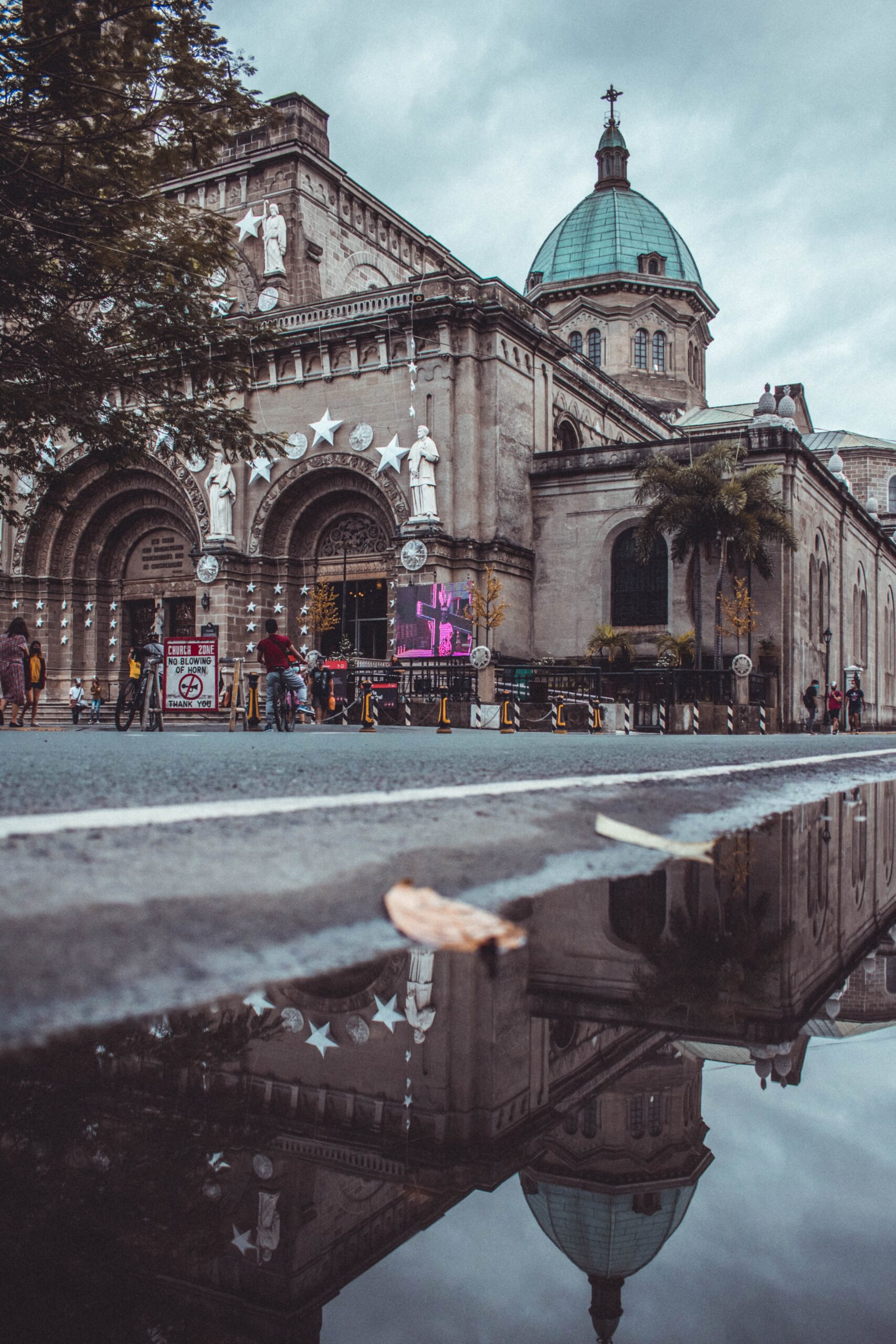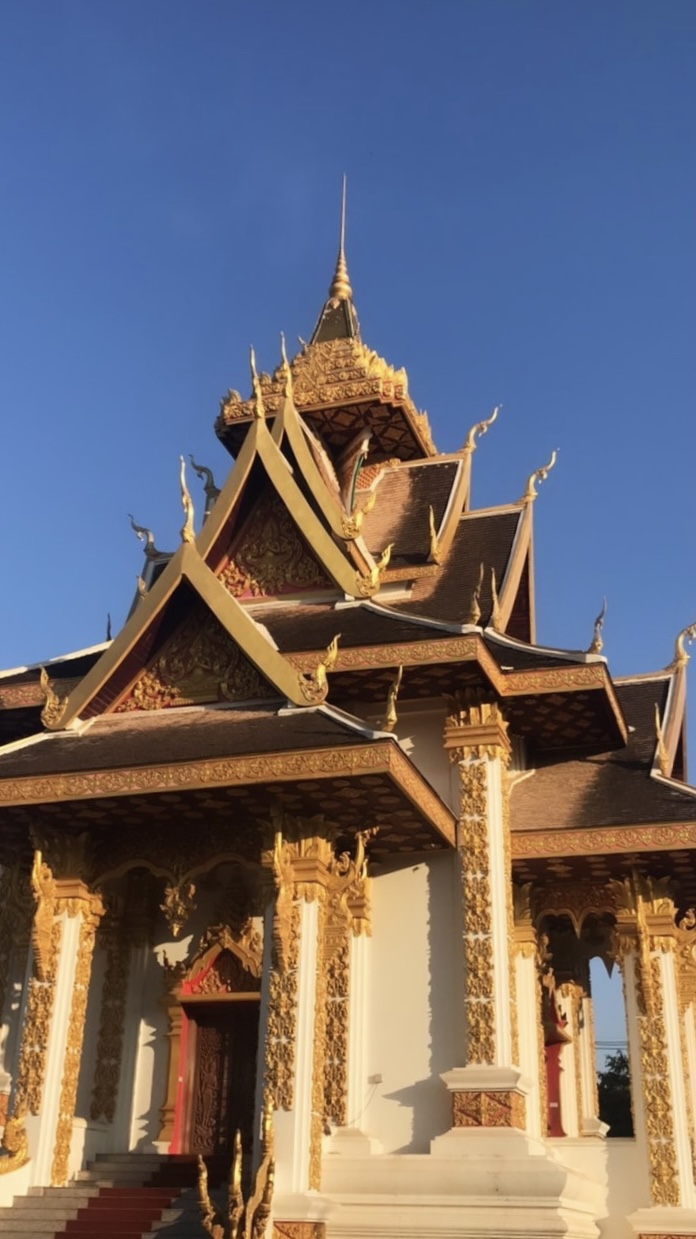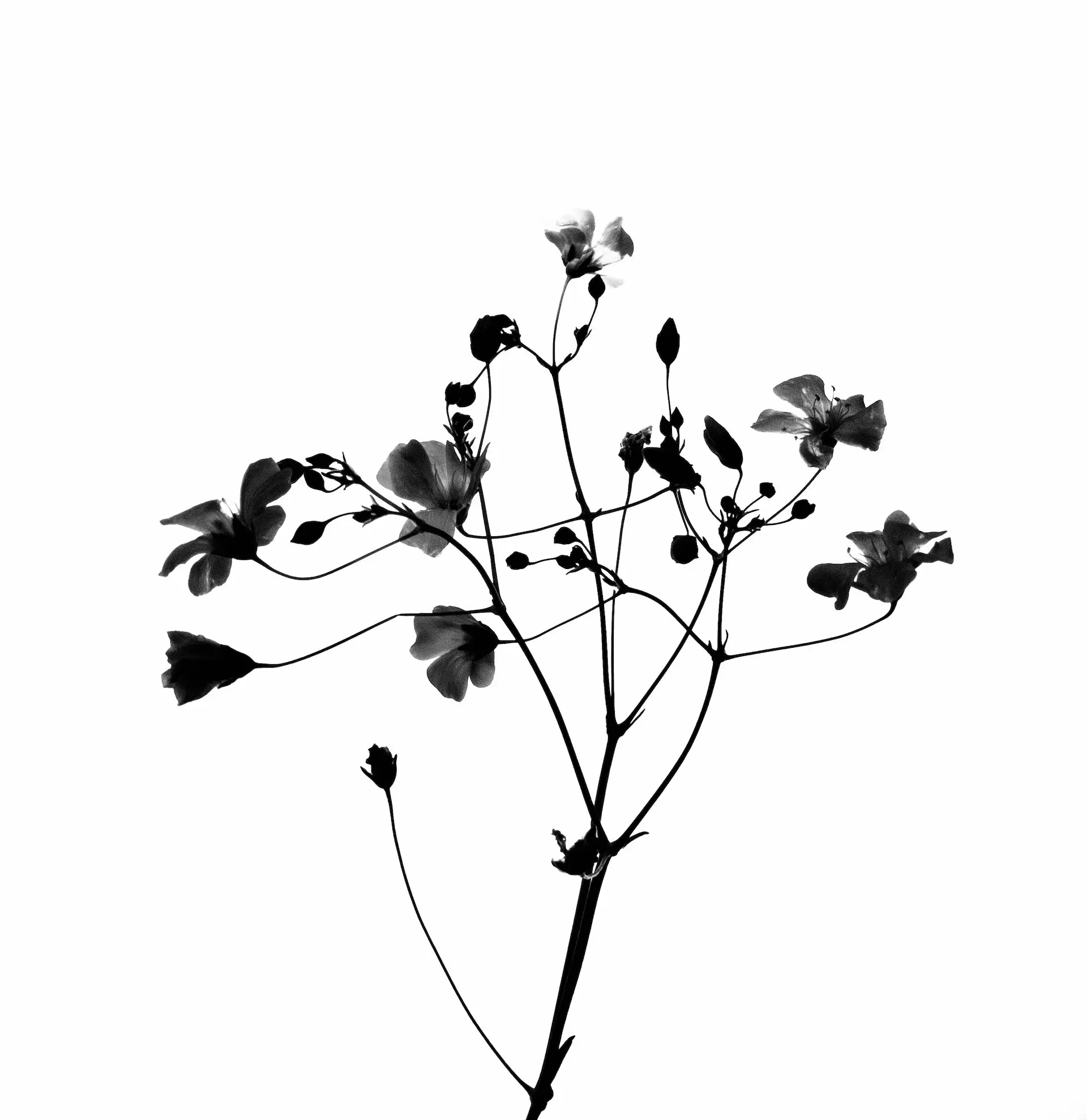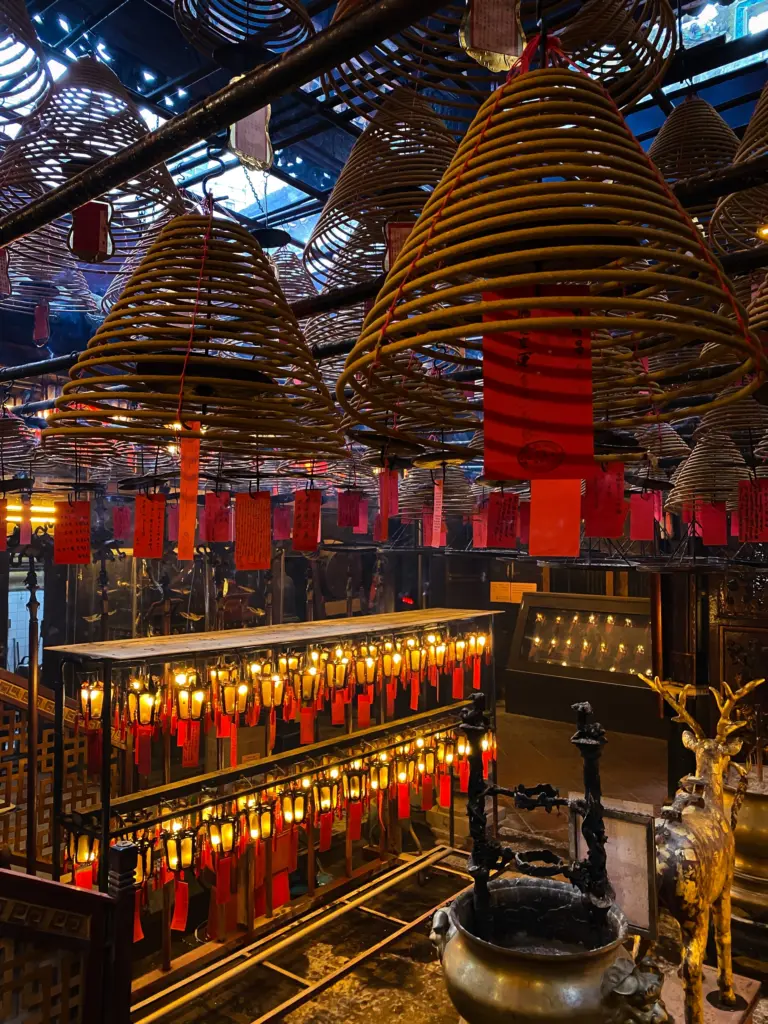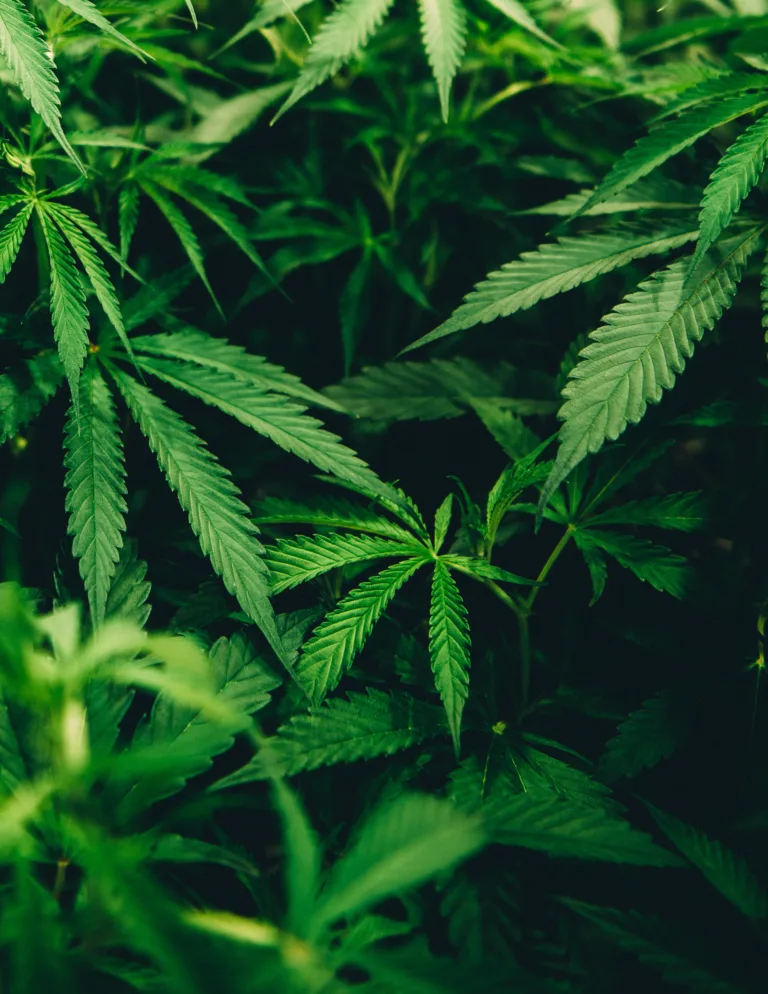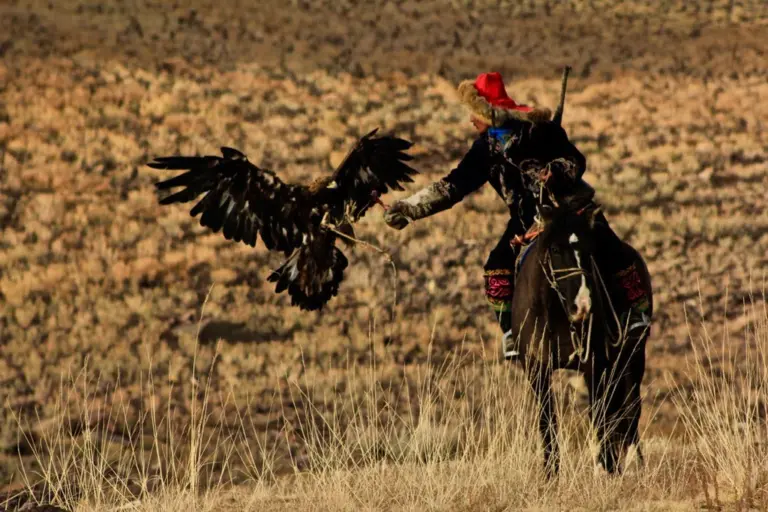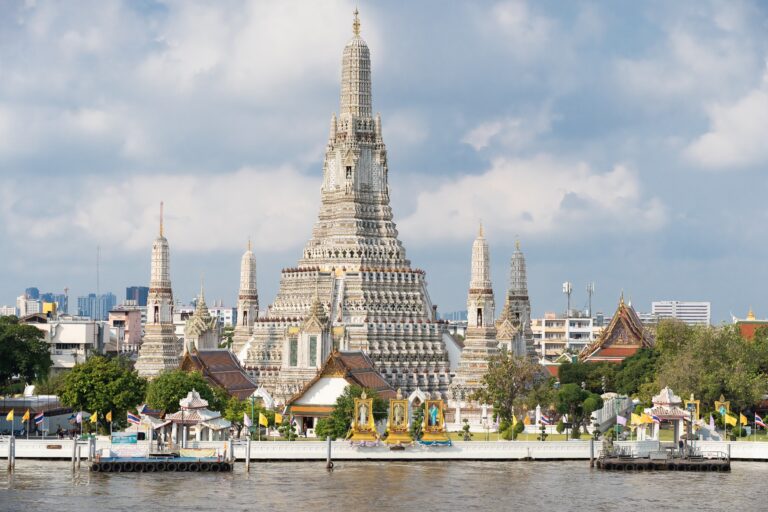The Orkhon Waterfall, or simply the Waterfall in most tours, lies in the Orkhon Valley, a UNESCO World Heritage Site.
For the Mongolians, it’s known as Ulaan Tsutgalan. This waterfall cascades from a height of over 20 m (65 ft), creating a spectacle of natural beauty made even more breathtaking as it’s juxtaposed by the expansive and vast steppes of the Motherland.
For us though, this is where we were able to have a once in a lifetime experience of being able to witness the birth of a baby horse out in the wild open. Learning a lot about Mongolian culture and superstitions in the process.
Depending on the season, the waterfall can range from a thunderous force in the spring and early summer, to a serene cascade later in the year, or perhaps even none at all as we have discovered for ourselves!
Read on to learn more about our experience visiting this majestic site!
Table of Contents
Toggle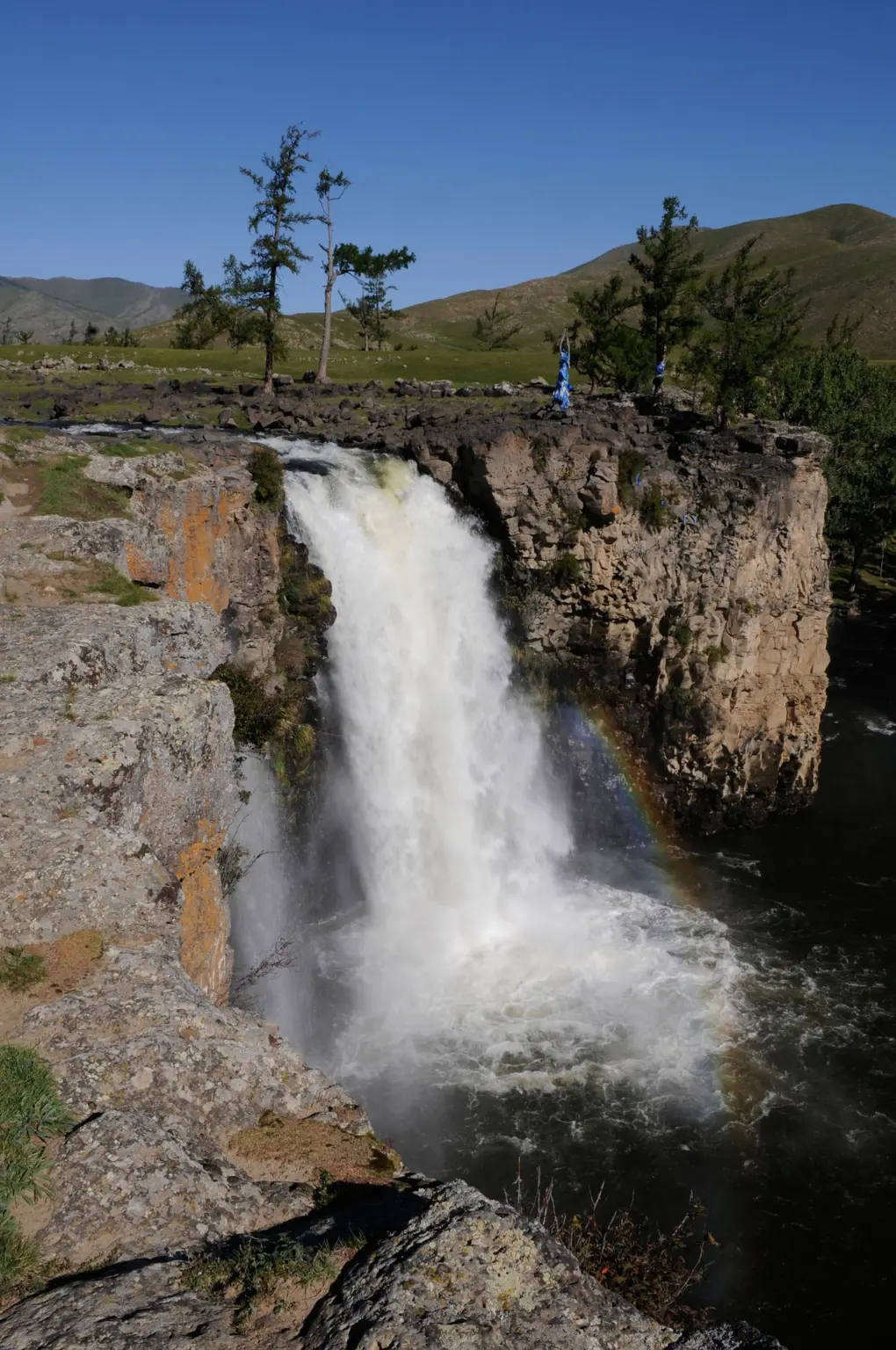
What to Know About Orkhon Waterfall
Orkhon Waterfall owes its existence to the fascinating interplay of geological forces over millions of years. The Orkhon Valley itself is due to the volcanic activity that once sculpted this region, part of the broader landscape of the Khangai Mountains.
The waterfall’s formation is directly linked to these ancient volcanic processes, which created a terrain rich in basalt rocks, through which the Orkhon River has carved its path over millennia.
The genesis of Orkhon Waterfall can be traced back to a combination of volcanic eruptions and the subsequent erosion caused by the relentless flow of the Orkhon River.
Over time, the river eroded the softer volcanic rocks, creating a deep canyon, and eventually encountered a resistant layer of basalt rock. Unable to erode this layer at the same rate, the river’s waters found their way over the edge of the basalt, giving birth to the waterfall as it is seen today.
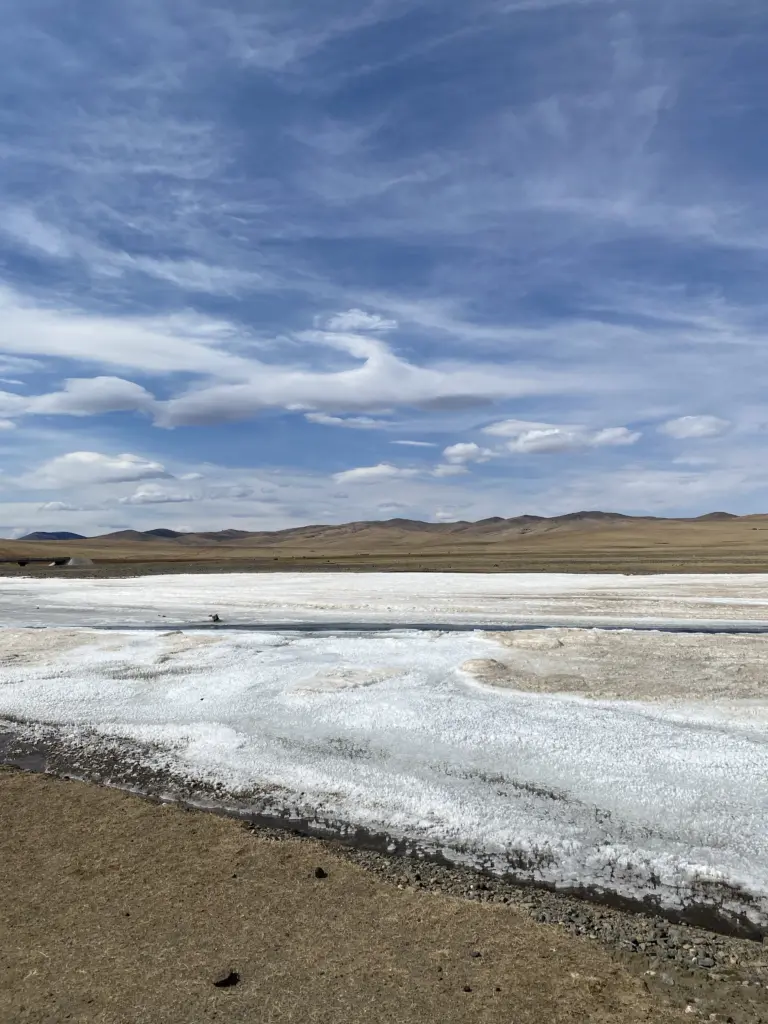
Significance of the Orkhon Valley
The Orkhon Valley is a crucible of Mongolian history. This region, recognized by UNESCO as a World Heritage Site, has been a pivotal stage for the development of Mongolian statehood, culture, and religion.
The valley served as the center of several Mongolian empires, most notably as the location of the ancient city of Karakorum during the 13th and 14th centuries, which was the capital of the Mongol Empire under Genghis Khan and his successors.
Near the Orkhon Waterfall, are stone monuments and Turkic inscriptions that date back to the 6th to 8th centuries, bearing witness to the earlier Uighur and Turkic states that flourished in the area. The valley is also dotted with ancient burial mounds, known as khirigsuurs, and balbal stone markers, which are linked to Turkic and Mongolian nomadic cultures.
Moreover, the Orkhon Valley is significant for its role in the spread of Buddhism in Mongolia. Numerous Buddhist monasteries and temples were established in the region from the 16th century onwards, reflecting the deep spiritual connection and the transition of Mongolian society towards Tibetan Buddhism.
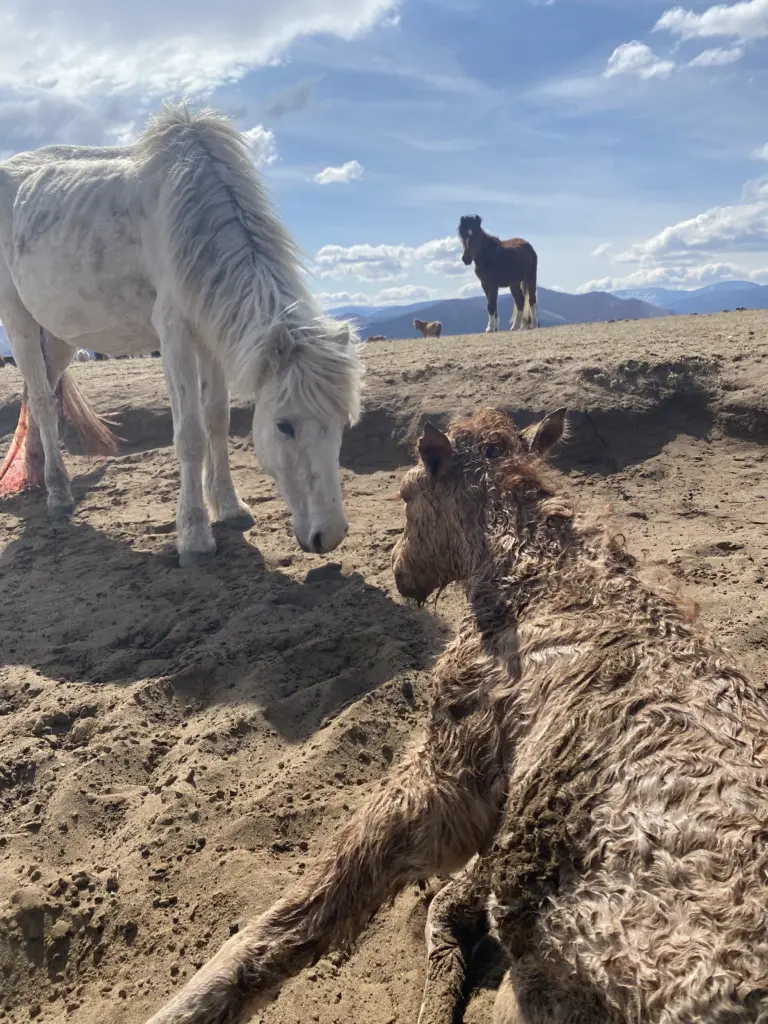
Biodiversity in the Orkhon Valley
The vegetation around Orkhon Waterfall is predominantly steppe, with vast grasslands that are home to a variety of grass species, herbs, and wildflowers. In spring and early summer, these grasslands bloom with a colorful array of flowers, including edelweiss, Siberian iris, and various species of rhododendron. The riverbanks and more moist areas near the waterfall support willows, sea buckthorns, and other shrubs.
The open grasslands are home to a variety of mammals, including the iconic Mongolian gazelle, Siberian marmots, and the elusive corsac fox. The presence of prey species also attracts predators such as the steppe eagle, saker falcon, and the grey wolf, which roam the area in search of food.
The riparian zones along the Orkhon River and near the waterfall itself are particularly rich in birdlife, attracting species such as the whooper swan, common goldeneye, and various species of ducks and waders.
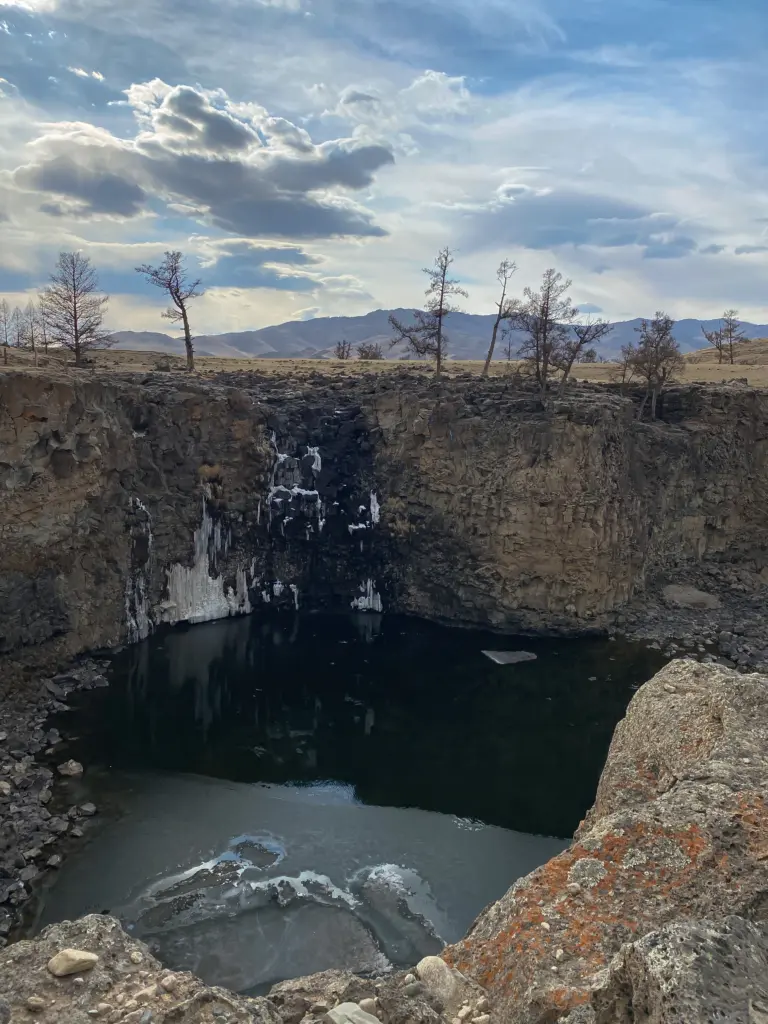
Best Time to Visit Orkhon Waterfall
The best times to visit Orkhon Waterfall if you are aiming to see it at its peak would be around late spring to summer, specifically from June through August. We were there around late April and it was still a bit winter-y then so there was no water flowing at all. It was still beautiful nevertheless!
- Late Spring (June): As the snow in the higher elevations of the Khangai Mountains begins to melt, it feeds the Orkhon River, increasing the volume and power of the waterfall. Visiting in June allows you to witness Orkhon Waterfall at its most majestic, with the cascade at its fullest. The weather during this time is becoming warmer, yet still pleasant, with daytime temperatures generally comfortable at 10°C to 20°C (50°F to 68°F).
- Summer (July to August): The peak of summer is an ideal time to visit for those looking to enjoy not only the waterfall but also the surrounding landscapes of the Orkhon Valley, which are lush and green following the spring rains. The weather is warmest during these months, with temperatures that can rise significantly but are typically moderated by the region’s altitude, hovering between 20°C and 30°C (68°F to 86°F).
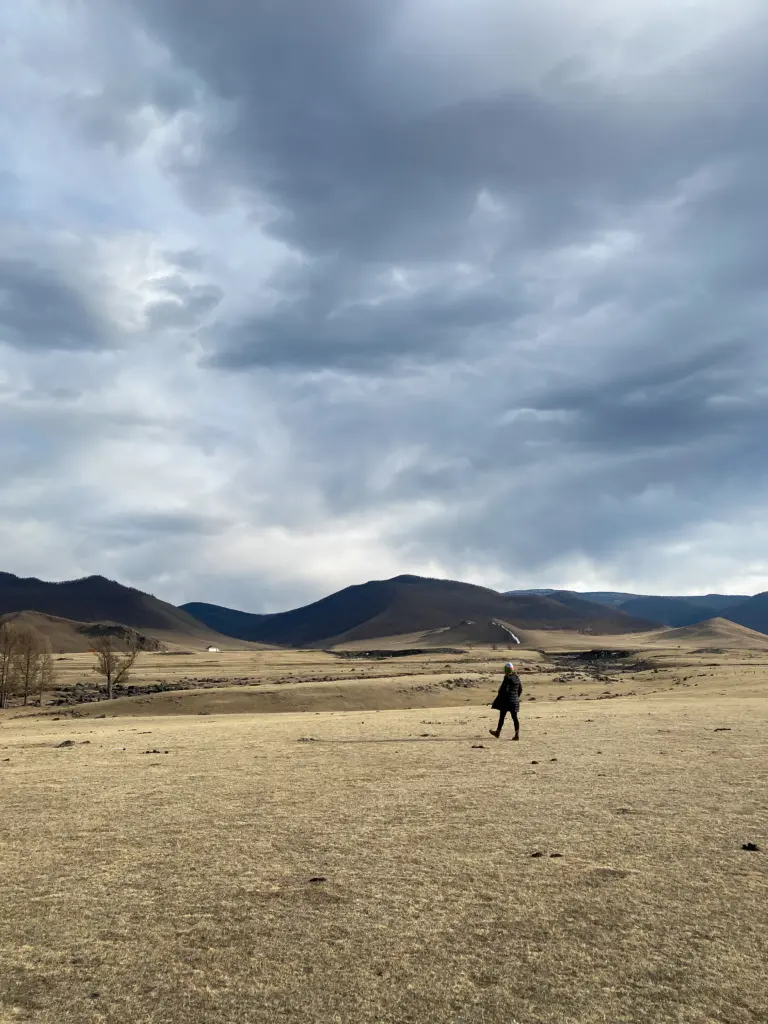
What to Expect when Visiting Orkhon Waterfall
- Most likely you will be able to do some horse riding around the area just as we did.
- Orkhon valley is quite far from civilization so you will be staying with the nomads here in their traditional ger. This is an excellent opportunity to experience Mongolian nomadic culture and hospitality. Make sure to bring some handgifts as well!
- With that being said, there also won’t be showers or man-made toilets here aside from the hole in the ground. Nomad-style.
- Aside from the Waterfall, the landscape offers some really good hiking opportunities especially for sunrise and sunset. Be adventerous and explore the vast landscapes, just be sure you know your way back!
- Stargazing is also another classic activity to do in the Mongolian steppes, you can even see the milky way on clear nights.
- Orkhon Waterfall was part of our 3-day Orkhon Valley tour that we booked with UB Guesthouse if you’re interested. This included Erdene Zuu in Karakorum and Hustai National Park.
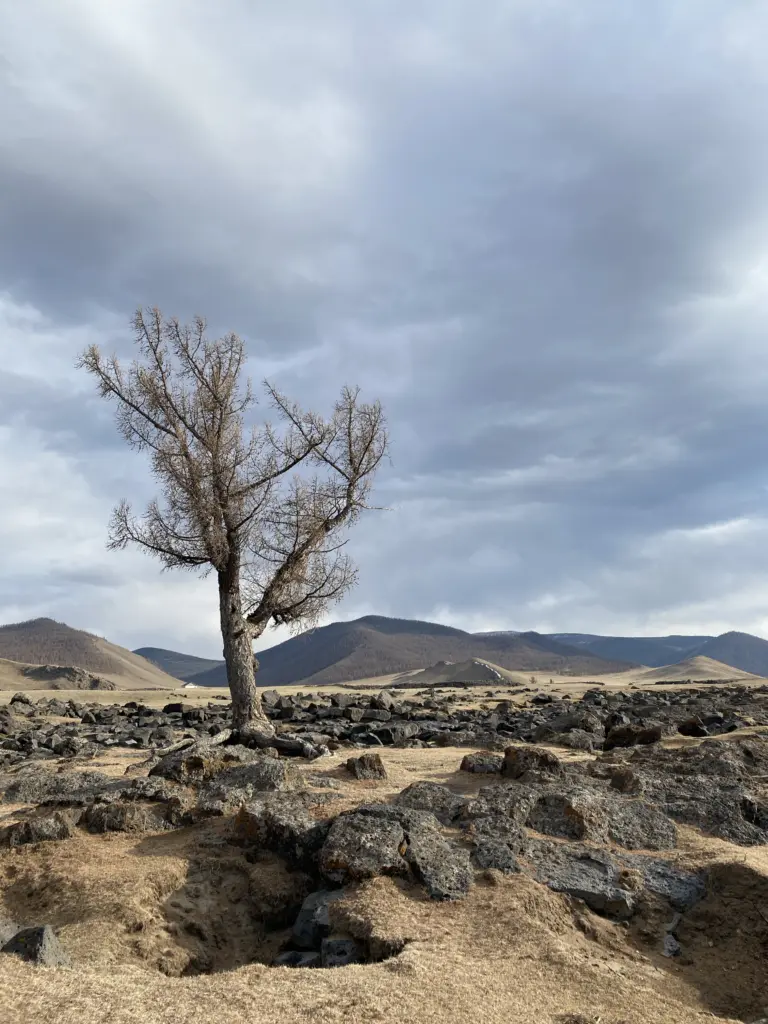
Our Journey to the Orkhon Waterfall
Our long ride from Erdene Zuu took us all the way to the Orkhon Valley, the terrain here was very different with high mountains and a frozen river. Plenty of animals to see from goats, sheep, horses, camels, vultures and even an eagle.
We picked up a nomad hitchhiker and drove him all the way towards the valley. At one point, we were trying to find our camp and Gana seemed to have gotten a bit lost and asked the nomads living inside a random ger for directions.
We eventually found the right place and got situated inside our nomadic family’s tent. It was our first time in one, even for Emily who had done the Gobi trip previously, said that this was one of her highlights. I enjoyed their hospitality as well and ate some of their delicious bread.
Emily tried talking to them via Google Translate and the grandma cooked some food for us. They had an adorable dog and four horses, one of them was quite skittish and I had to earn its trust slowly but it eventually let me pet it and when I stopped, it even asked for more.
We then went to the Orkhon Waterfall which was the main spot for the day, except that it still didn’t have water so it was just this frozen wall with icicles and the lake below was also half frozen.
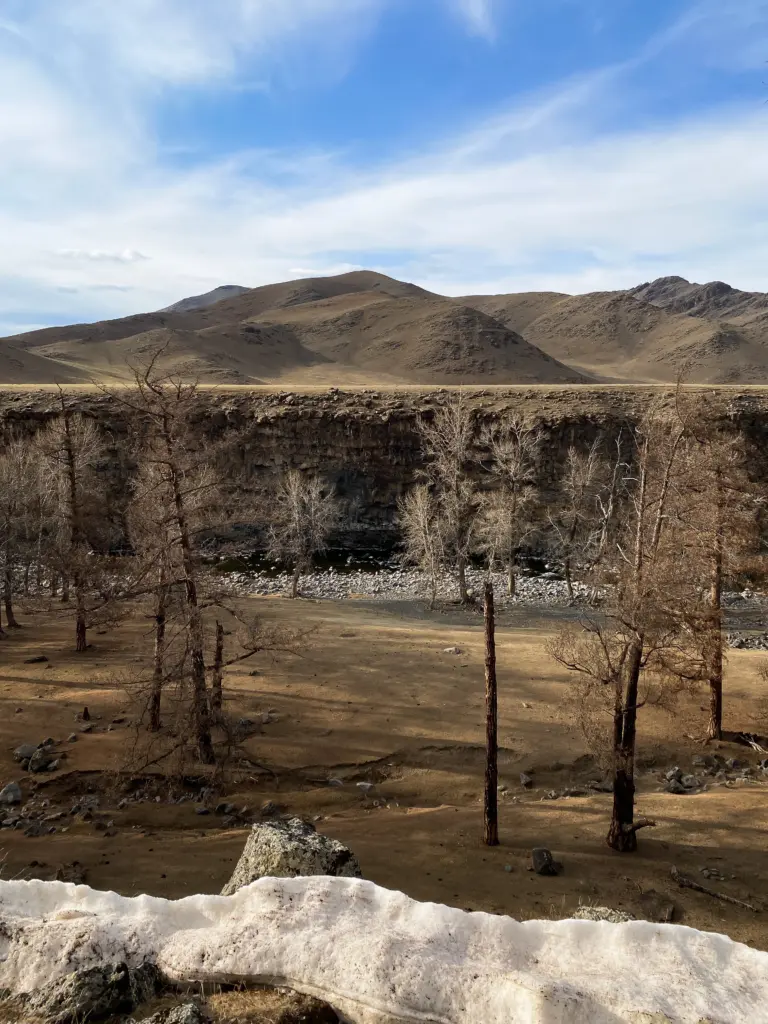
Instead, Emily and I had a walk around the area which was breathtaking with a lot of rock formations and so much space (and poop). I meditated on a boulder for sometime before Gana’s car came my way, I had wanted to wait for sunset here but it seems like we were going back.
For dinner, I had some delicious potatoes and rice and this special relish that they put on which was absolutely amazing, I got seconds.
I didn’t want to miss the sunset so I went out to scout for a place to hike, I ran towards it with the dog who seemed to accompany me all the way up where I saw just how beautiful the land was.
A meandering river flowed right across the grasslands while surrounded by mountains on both side, all the while during sunset. It was such a power moment that I felt my soul shedding a lot of baggage.
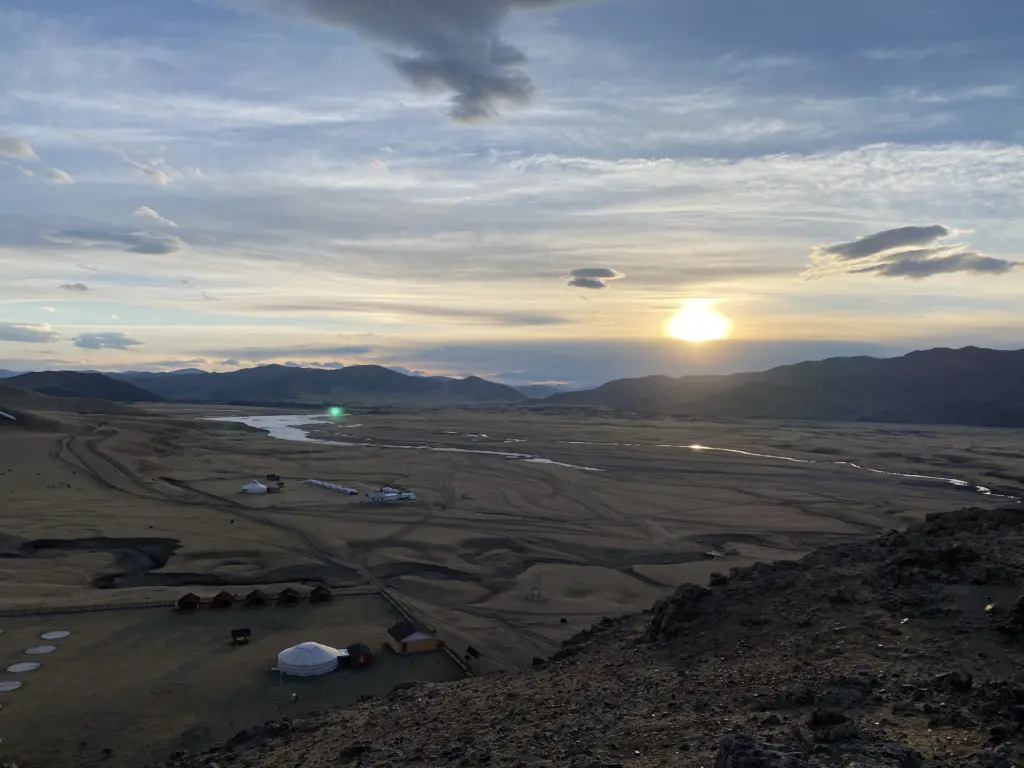
I went back to our ger, the had put some wood in and it was getting quite hot, I squeezed in my sleeping bag which was on a hard bed and hoped to get some sleep.
In the morning when the fire died out, it got really cold to the point where I had to go into a fetal position and cover my entire head with the sleeping bag.
Waking up freezing the next morning, I braved the cold outside and made my way to the nomadic family’s tent to warm up. They laughed at my suffering which was no doubt quite funny with how I was charading that it was so cold.
I ate some breakfast while watching TV with them, just various programs on temples, a drama on nomad life, Ulaanbataar, really simple stuff. Emily soon came in after and we went out for a horse ride.
It was another cloudy day and I was on the horse that I befriended yesterday, the nomad took us around the perimeter. There were a lot of poop littered around, bones as well.
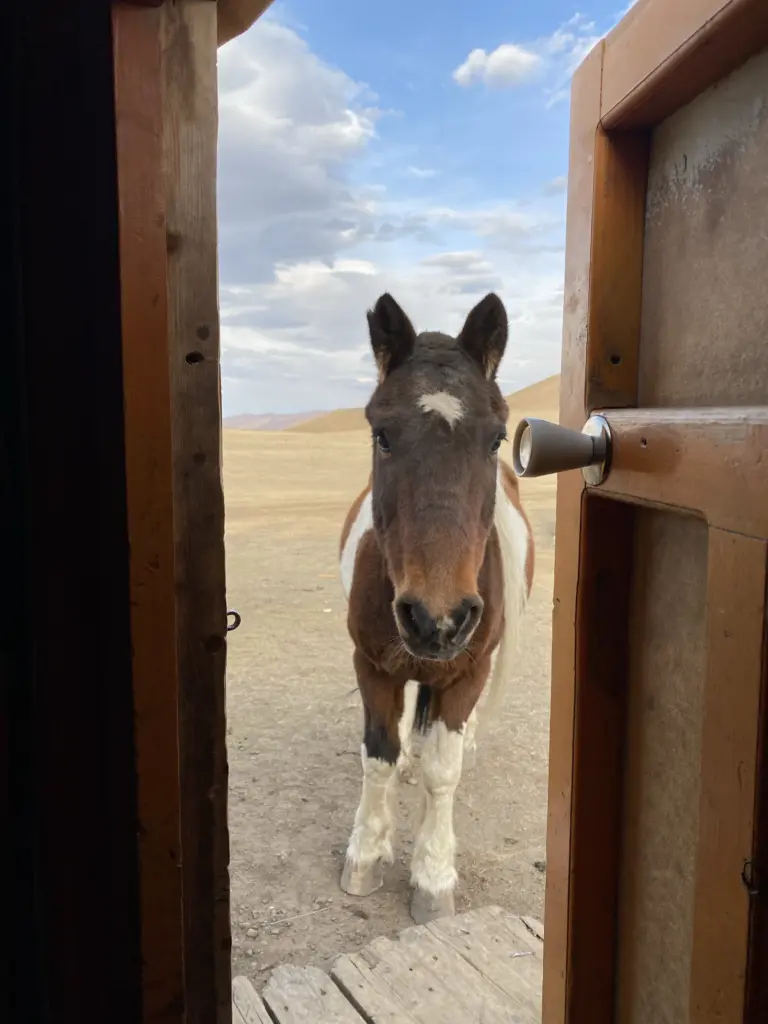
After the horse ride, we said good bye to the nomadic family and went on our way towards Hustai National Park.
Not too long after we started the trip, Gana got a bit excited and pulled over asking if we wanted to take photos. I didn’t understand what was going on until Emily pointed out that there was a foal, newly born!
All of us went down the car to get a closer look.
Gana went straight for the baby and started touching it while calling us over. I was so afraid but the mother was too tired and didn’t seem to be too protective or maybe it was used to humans?
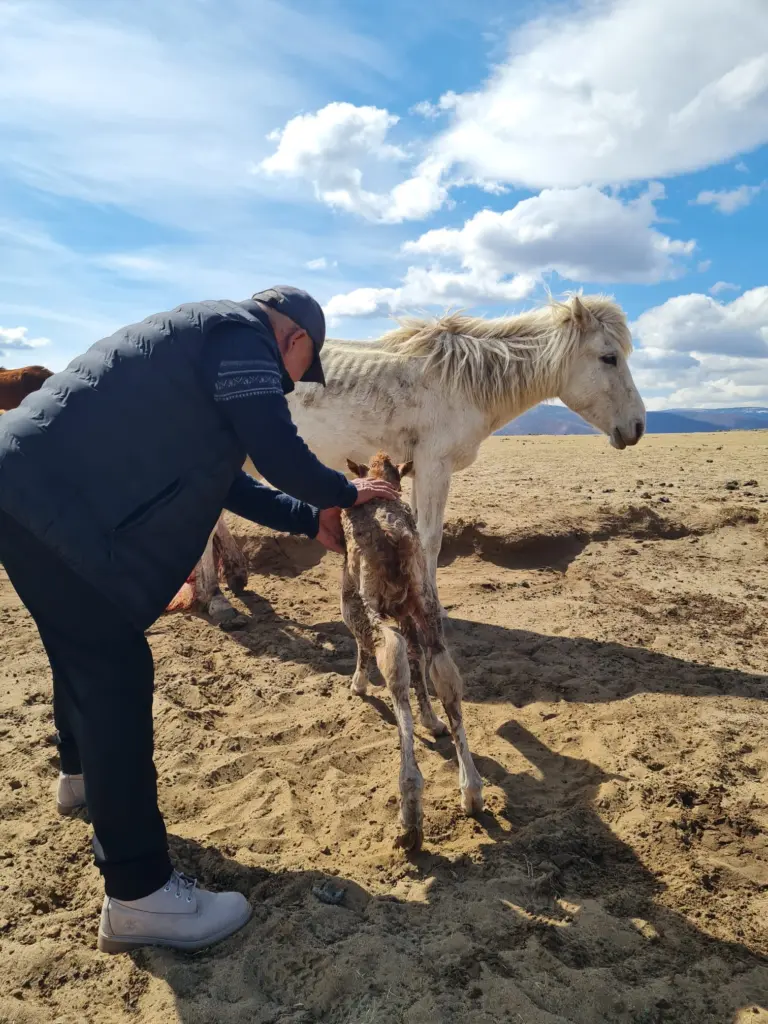
I approached the baby, Gana encouraged me to touch the baby’s body and head, he kept repeating “Is good! Is good!” So my guess at that time was that it was a really auspicious event in Mongolian culture. We were doubly surprised when Gana rode the baby horse, not putting his whole weight on it but just pretending to ride it which was apparently also extremely lucky.
He encouraged me to do the same to which I reluctantly and in a panic ended up doing.
Bobbi later clarified that only males were allowed to do this and that he who does it will be lucky for life. Good for me, I guess?
Gana wouldn’t stop at that though, Emily and I watched in horror as he pulled out the mother’s placenta and started playing around with it like a little kid. He was trying to find something to feed the baby horse, I think some part of the placenta.
He also rolled it around in dirt, at this point I have no idea what he was doing. I was able to get tons of photos that I felt were really once in a lifetime and was so giddy and happy with how everything turned out.
I still couldn’t stop laughing in the car at how the events of the day turned out.
Plan Your Trip to Mongolia | Best Travel Resources
Book Your Accommodations
- Booking.com – the world’s leading online booking platform for accomodations around the world, they have an extensive amount of available listings with zero booking fees and best price guarantees.
- Hostelworld – a backpacker’s best friend, Hostelworld has the largest collection of hostels and guesthouses for affordable prices.
Don’t Forget Insurance
- SafetyWing – from Nomad Insurance, an insurance by nomads for nomads. They understand our lifestyle well and have really comprehensive and flexible plans that cater to any traveler.
Find Cheap Flights
- Kiwi.com – my go-to for booking and finding the cheapest flights and it’s helped me save tons of money. They do virtual interlining which is connecting flights from airlines that do not codeshare, so you can find routes that you wouldn’t be able to find normally.
Join Tours & Activities
- GetYourGuide – is one of the best places to find unique tours and activities. I found that it’s an excellent way to meet fellow travelers and create fond memories. They are not only limited to tours as they also offer niche services such as skip-the-line tickets or private transfers.
Catch a Ride
- Rentalcars.com – nothing beats the freedom of the road, Rentalcars.com is the world’s largest online car rental service. They operate across 160 countries so they’re the perfect partner to work with if you find yourself wanting a ride.

